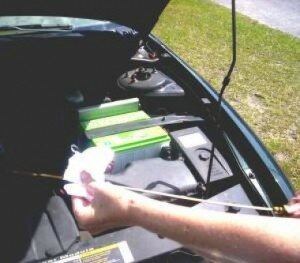October 27th, 2010 -

In a recent study by the UK blog, Autoquake.com, they revealed some astonishing statistics in regards to women and men maintaining their vehicles. What do you think?
More than one-in-ten female drivers (12%) never check their car’s oil level. Just under 8% of men confess to the same neglect. Twice as many women (14%) as men (7%) admit to never checking their tyre pressures while almost one-in-five say they never check the tread-depth.
Women drivers are also more likely than men to pay someone else to carry out basic maintenance for them. Just over 14% of women pay to have coolant levels checked compared with 5% of men. A staggering 9% of women pay someone else to check their washer fluid level. Just 3% of men won’t do this simple job for themselves.
You can avoid becoming one of these statistics by bring your vehicle to one of our auto-service centers.
March 24th, 2010 -

Cars can be expensive! This is true…. Buying a car is the 2nd largest investment you could ever make. Behind purchasing a home or business of course. Taking care of a new or used car can get pricey. It’s important for you to know the things that you can probably live without. Everyone wants to save money right?
(1) Gas Additives – The manufacturer of your vehicle will specify what kind of fuel your car needs. Whether it be regular unleaded or diesel it more than likely already has the additives that you car needs in it. Also if your new or used car requires regular unleaded and you put premium or mid grade fuel in your car….You’re not getting better gas for your car. You’re just wasting money.
(2) Oil Additives – Once again the manufacturer will specify exactly which type of oil you need in your new or used car. Putting in additives to an oil they specified for you to use could severely damage your new or used car. Don’t add anything unless the oil you put in was not the oil they told you to use and it’s missing something. Do you really know what’s in that bottle your about to pour into your car? It could be harmless but it could seriously damage your engine if it has solvents in it that can dilute the oil and ruin its ability to protect your engine. What if you accidentally not knowingly over fill it?
(3) Those High Speed Tires – In most states the highest legal speed limit is 70 but most of our highways are 60 or sometimes 65. In the US and in Ohio there is definitely nowhere you can cruise at 100 and not get at least a ticket or possibly even jail. A lot of cars come with tires that are made for safe travel at a continuous speed of let’s say 60. Unless you are driving on the Autobahn or are a NASCAR driver what’s the point? You’re just wasting money.
(4) Extended Warranties – Just make sure you do some research, add everything up, and weigh your options. Sometimes the cost of the warranty may out weigh the cost of some repairs later on. If it makes you feel more comfortable by having an extended warranty then by all means go for it. Just make sure you read the warranty very closely and you understand everything.
January 18th, 2010 -

Wouldn’t you rather be tailgating at a Bengals game then tailgating like the picture on the left? I know I would!
Tailgating is when a driver follows the vehicle in front too closely. The closer you follow the vehicle in front of you, the less time you have react. Tailgating the car in front of you will never speed up your trip, so don’t do it! Even if you are in a hurry or stressed out. If the person you are tailgating has to stop suddenly, you will absolutely be in the wrong when you “accidentally” hit them from behind.
Here are some guidelines to help you determine a safe distance when traveling on certain road conditions:
1. The Two-Second Rule - If you are on a dry and clear road, count two seconds to safely gauge the distance between you and the car in front of you. When the car in front of you drives past a sign or pole, you should reach the count of two before you pass the same sign or pole.
2. Four-Second Rule -This is for when the roadways are wet and rainy. In these conditions, you should employ a four second gap between you and the car in front of you.
3. 10-Second Rule - This rule applies to icy and snowy conditions when the roadways are at their worst. This may seem like a large distance, but every winter there are an enormous number of weather related accidents. Better to be safe than sorry after an accident.
Avoid needless accidents by traveling a safe distance behind other vehicles!






